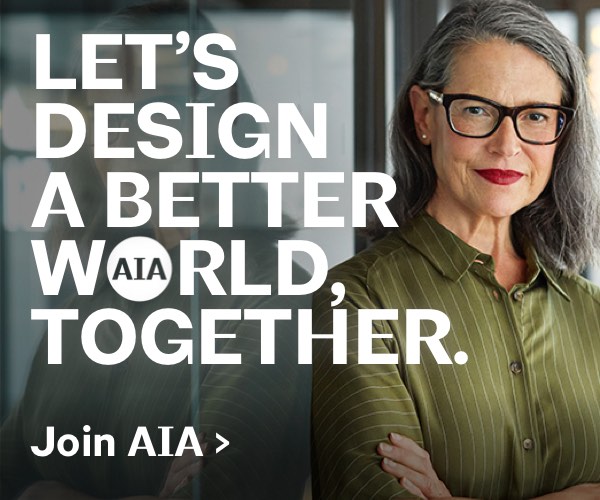The winner of the 2018 Affordable Housing Design Award brings design quality, affordability, and support services to residents making their way out of long-term homelessness
By John Reinan
In Minneapolis’ booming Downtown East neighborhood, where cranes dot the skyline and condos sell for six- and seven-figure prices, Emanuel Housing doesn’t stand out. Which is exactly what makes it such a standout project.
Emanuel’s 101 units offer well-designed affordable, supportive housing to residents who’ve struggled with homelessness, poverty, crime, and addiction. Yet the building fits right in with the expensive market-rate projects that have flourished in what was once a bleak, gritty landscape most notable for its acres of asphalt parking lots.
“There hasn’t been a distinguishing thing between this and the other projects going up around us,” says Laura Craig, program manager for RS Eden, a nonprofit developer of supportive housing. “We wanted it to be a welcoming and beautiful space, as gorgeous as walking into any of these condominiums nearby.”
OLD AND NEW
Creating such a building was the challenge facing St. Paul’s Cermak Rhoades Architects. The project brief called for renovating an historic warehouse on half of the site, designing a new building on the other half (replacing a parking lot), then seamlessly integrating the two. “It was one of the more interesting design aspects,” says Cermak Rhoades vice president Todd Rhoades, AIA. “It was fun to look at the differences in space.”
The design team took its cues from the warehouse’s 12-foot-high ceilings and tall windows to bring light and outdoor views to the entire building. The new structure boasts 9-foot-high ceilings, a full foot higher than what is typical in affordable housing. The lobby, which features a wall with a beautifully textured mosaic inlay, gives a view through to the green space in back.
Bringing even more light into the building is a five-story atrium where the new and the historic architecture meet. A stairway rises through the atrium with generous landings on each floor for impromptu interactions among residents. The laundry room on each floor opens onto the landing, increasing the potential for casual connections. “It’s like where streets intersect and you have something fun happening,” says Rhoades.
Other features for residents on a path to newfound stability and wellness include an exercise room, a spacious activity room with computer stations, and a green space at the rear of the 0.6-acre site with a dog walk and a community vegetable garden. A dog-washing room is inside, along with bike storage.
Adjacent to the main housing area is a walk-in healthcare clinic staffed by nurse practitioners and operated by the University of Minnesota. Residents also receive an array of social services onsite to help them maintain their sobriety and productivity.
COMMUNITY CONNECTIONS
The project, which opened in 2013, got its start nearly a decade earlier, when RS Eden had the foresight to buy a property that, at the time, wasn’t yet in high demand. “You could never buy this property for affordable housing today,” notes Rhoades, whose firm has designed nine projects for the nonprofit developer.
RS Eden president Dan Cain says the group’s goal is to “create intentional communities.” Emanuel’s location, with many amenities nearby—light rail and bus lines, the Mississippi River and Stone Arch Bridge, government offices and cultural attractions—works perfectly to help its residents integrate their new lives with the larger community around them.
Such connections are a critical part of RS Eden’s mission. Cain says Emanuel works hard to be a good neighbor to the other residential communities in the area, and that those efforts have been reciprocated. For example, when Emanuel opened, a group of residents from the nearby 282-unit Bridgewater development came over to welcome the newcomers, and Bridgewater residents have since invited Emanuel tenants to join them for river walks and other social activities.
The building, too, is well integrated. The older portion, with its mellow red brick, is a prototypical Minneapolis warehouse. The new section mixes glazed yellow brick and metal panels, echoing the aesthetic of many of the new downtown residential projects.
Thoughtful touches abound inside, such as a bathtub in every unit. For tenants accustomed to living in shelters, “a bathtub is a big deal,” notes Craig. Hallways are painted a different color on each side, a visual trick that makes them look shorter and less tunnel-like.
Nearly all the units are studios ranging in size from 393 to 425 square feet. There are six one-bedroom units, each 567 square feet.
“The design and the amenities create a sense of welcome,” says Cain. “We look for a neighborhood where we can work with the residents to be neighborly. And we look for places where our people won’t have the spotlight shined on them.”
Maybe so. But any spotlight shined on Emanuel Housing would find a building ready for its close-up.
EMANUEL HOUSING
Location: Minneapolis, Minnesota
Client: RS Eden
Architect: Cermak Rhoades Architects
Principal-in-charge and project lead designer: Todd Rhoades, AIA
Landscape architect: Spencer Jones Landscape Architect
Construction manager: Frerichs Construction
Size: 92,232 gross square feet
Cost: $12.35 million
Completion: September 2013
Photographer: Brandon Stengel, Assoc. AIA
DESIGN DISTINCTION
Emanuel Housing is the recipient of the 2018 Affordable Housing Design Award, a biennial honor organized by the American Institute of Architects Minnesota and supported by the McKnight Foundation. The jury of three nationally recognized affordable-housing experts lauded the project for how thoughtfully the developer and the architects integrated the support services into the building, and the building into the neighborhood. A new video by Ryan Siemers tells the story of Emanuel Housing through the eyes of the developer, architects, staff members, residents, and community partners.


